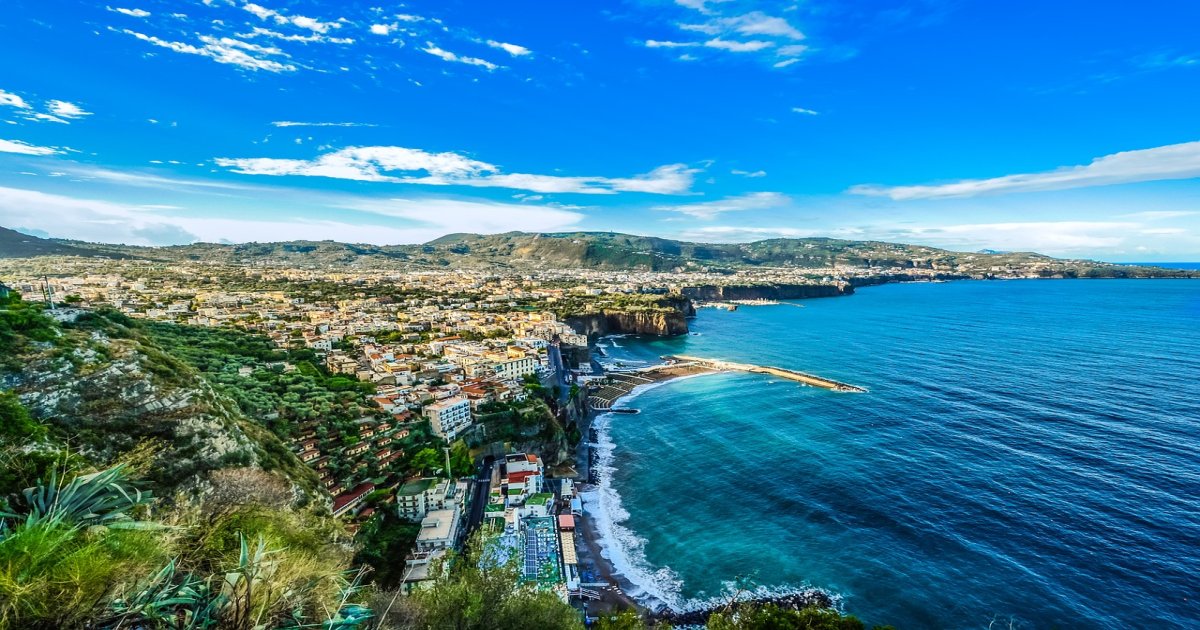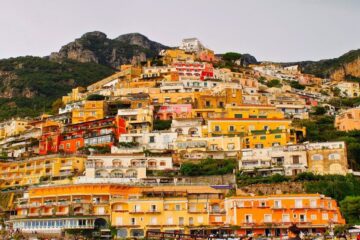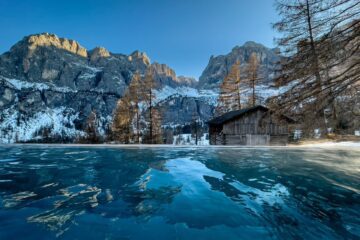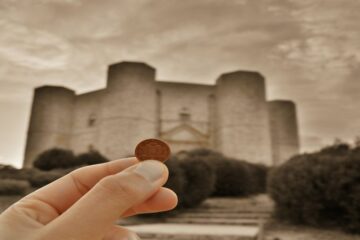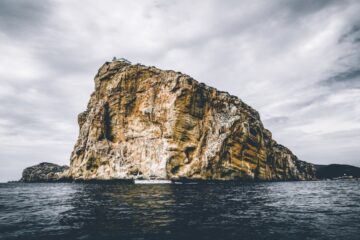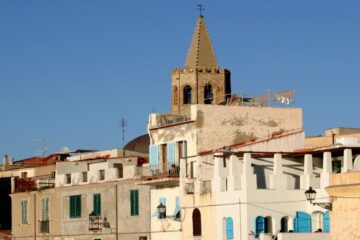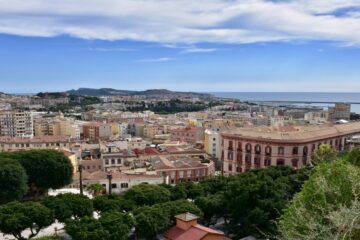Introduction
The Amalfi Coast of Italy is a stunning and picturesque stretch of coastline that has captured the hearts of visitors from around the world. But beyond its breathtaking views and charming towns, the Amalfi Coast is also a destination steeped in history, culture, and fascinating facts. In this article, we will explore 16 amazing facts about the Amalfi Coast that will give you a deeper understanding of this magical place and make your visit even more enjoyable. From its history as a paper-producing hub to its literary and artistic influences, the Amalfi Coast has a wealth of interesting stories to discover.
1. The town of Positano was created by Poseidon, the Greek God of the Sea
The stunning coastal town of Positano has a rich history that dates back to ancient times. According to legend, the town was created by Poseidon, the Greek God of the Sea. It is said that Poseidon fell in love with a nymph named Pasitea, and as a gift to her, he created a beautiful, peaceful fishing village for her to live in. This village eventually became the town of Positano that we know and love today.
While there is no concrete evidence to support this myth, it is a fascinating story that adds to the allure of Positano. The town’s picturesque setting and peaceful atmosphere certainly seem like the perfect place for a sea god to create a home for his beloved. Visitors to Positano can soak up the beautiful scenery and imagine themselves in the midst of this ancient legend.
Whether or not you believe that Poseidon created Positano, there is no denying the town’s charm and beauty. From the colorful buildings that climb up the cliffside to the crystal-clear waters of the Tyrrhenian Sea, Positano is a true gem of the Amalfi Coast. It’s no wonder that visitors from around the world flock to this idyllic town to bask in its beauty and soak up its rich history.
2. The coast was constantly under the attack of pirates
In addition to its creation by Poseidon, Positano has a history of defending itself against pirates. During the Middle Ages, the coast was constantly under the attack of pirates, who sought to loot and pillage the town’s wealth. In response, the locals built watchtowers and fortresses along the coast to protect themselves.
The winding streets of Positano were also designed as a defense against pirates. The narrow, labyrinthine alleys were difficult for outsiders to navigate, making it easy for the locals to defend their town. Even today, the streets of Positano retain their maze-like quality, adding to the charm and uniqueness of the town.
Despite these defenses, Positano was not always successful in fending off pirates. In fact, the town was captured and looted numerous times over the centuries. However, the resilience of the people of Positano is evident in the fact that they always managed to rebuild and recover from these attacks.
Today, visitors to Positano can still see the watchtowers and fortresses that once protected the town from pirates. These historic buildings serve as a reminder of the town’s rich history and the resilience of its people. They also add to the unique character of Positano, making it a truly special place to visit.
3. It took 150 years to build the road on the coast
The Amalfi Coast is full of interesting facts, and one of the most fascinating is that it took 150 years to build the road that winds along its picturesque coastline. The Strada Statale 163, also known as the Amalfi Drive, was built in the mid-19th century and stretches for 50 kilometers from Sorrento to Salerno.
The road is a marvel of engineering, with hairpin turns, steep cliffs, and breathtaking views of the sea. It was built by hand, with workers using pickaxes and shovels to carve the road out of the rocky coastline. Despite the difficult terrain and harsh working conditions, the road was completed in 1872.
Today, the Amalfi Drive is one of the most famous roads in the world, attracting visitors from around the globe who come to experience its beauty and charm. It is also a popular driving route for those who want to explore the towns and villages of the Amalfi Coast, including Positano, Amalfi, and Ravello.
4. The domes on top of the buildings are filled with sand in Positano
One of the most interesting facts about the Amalfi Coast is that the buildings in the town of Positano have domes on top that are filled with sand. This unique feature serves as a form of insulation, keeping the buildings cool in the summer and warm in the winter. The sand also helps to absorb any moisture that might seep in through the roof, keeping the interiors of the buildings dry.
This technique is thought to have originated in ancient times when the builders of Positano were looking for ways to make their homes more comfortable in the hot Mediterranean climate. Today, the sand-filled domes add to the charm and character of the town, giving it a distinctly Mediterranean feel. Visitors to Positano can admire these unique structures and learn more about the town’s fascinating history.
5. Amalfi Town was once an independent Republic
One of the interesting facts about the Amalfi Coast is that the town of Amalfi was once an independent maritime republic. During the 11th and 12th centuries, Amalfi was a major power in the Mediterranean, controlling important trade routes and establishing itself as a center of commerce and culture.
However, Amalfi’s days as a republic came to an end in the late 14th century, when it fell under the rule of the nearby Kingdom of Naples. Despite this, the town has retained much of its historic charm and character, with beautiful medieval architecture and a rich cultural heritage that draws visitors from around the world.
6. The town of Amalfi dates back to the 6th century BC
The town of Amalfi is located on the Amalfi Coast in the Campania region of southern Italy. Amalfi was founded in the 6th century AD and became an important trading hub in the Mediterranean during the Middle Ages. The town was the capital of the maritime republic known as the Duchy of Amalfi, which was a powerful trading power from 839 to the mid-13th century. Amalfi boasts a rich history and culture, with stunning medieval architecture, vibrant local festivals and traditions, and a thriving population of merchants, artists, and intellectuals.
7. Roman Emperors used to go to Capri for vacation
Capri has been a popular vacation destination for centuries and includes Roman Emperors. In fact, several Roman Emperors were known for visiting Capri to escape the heat and humidity of the mainland during the summer months. The most famous of these Emperors was Tiberius, who ruled from AD 14 to 37. He spent the last decade of his reign on Capri, where he built a series of villas and gardens. Tiberius was known for his extravagant lifestyle and hedonistic tendencies, and his time on Capri was no exception. He used the island as a retreat from the stresses of ruling the empire, and he indulged in all manner of pleasures, from feasting and drinking to engaging in illicit affairs. Despite its association with Tiberius, Capri remains a popular vacation spot to this day, renowned for its stunning natural beauty, luxurious hotels, and vibrant nightlife.
8. Amalfi Coast is a Notable Filming Spot
The Amalfi Coast, with its stunning natural beauty and picturesque towns, has become a popular destination for filmmakers. The rugged coastline, turquoise waters, and colorful buildings provide a stunning backdrop for movies and TV shows.
One of the most famous films shot on the Amalfi Coast is “The Talented Mr. Ripley” starring Matt Damon, Gwyneth Paltrow, and Jude Law. The movie was filmed in the town of Positano and showcases the beauty of the area.
Another notable film shot on the Amalfi Coast is “Under the Tuscan Sun” starring Diane Lane. The movie was filmed in various locations including the town of Amalfi and the Villa Cimbrone in Ravello. The stunning scenery of the area adds to the romantic and dreamy feel of the movie.
Other films shot on the Amalfi Coast include “Only You” starring Marisa Tomei and Robert Downey Jr., “The Life Aquatic with Steve Zissou” starring Bill Murray, and “To Rome with Love” directed by Woody Allen.
The Amalfi Coast has also been featured in numerous TV shows including “Master of None”, “The Trip to Italy”, and “The Bachelorette”. The area’s popularity as a filming location is due to its unique combination of natural beauty, historical architecture, and charming towns.
9. The coast is a very popular honeymoon destination for celebrities
The Amalfi Coast is not only a popular location for filmmakers but also a sought-after honeymoon destination for celebrities. Its stunning natural beauty, romantic atmosphere, and luxurious accommodations make it a perfect place for newlyweds to celebrate their love.
Celebrities such as Kim Kardashian and Kanye West, George Clooney and Amal Alamuddin, and John Legend and Chrissy Teigen have all chosen the Amalfi Coast as their honeymoon destination. These A-list couples were spotted enjoying the local cuisine, taking boat trips along the coast, and relaxing in the area’s luxurious hotels.
One of the most popular hotels on the Amalfi Coast is the historic Hotel Santa Caterina in Amalfi. This five-star hotel offers breathtaking views of the coast, a private beach, and a stunning infinity pool. Other popular hotels include the Belmond Hotel Caruso in Ravello and the Le Sirenuse in Positano.
Aside from its luxurious accommodations, the Amalfi Coast offers a plethora of romantic activities for honeymooners. Couples can take a sunset cruise along the coast, visit the charming towns of Amalfi and Positano, or take a hike on one of the many scenic trails in the area.
10. Local families built their own private churches
The Amalfi Coast is known for its rich history and cultural heritage, and one of the most unique facts about the Amalfi Coast is the tradition of local families building their own private churches. These churches, known as “Cappelle private” in Italian, are scattered throughout the coast and are a testament to the deep religious roots of the region.
Many of these private churches were built by wealthy families as a way to demonstrate their piety and devotion to God. They were often constructed as an extension of the family’s home or as a separate building on their property. These churches were built with the same attention to detail and architectural beauty as the larger public churches in the area, making them a valuable part of the local cultural heritage.
The private churches are not open to the public and are used exclusively by the family for religious services, such as weddings and funerals. Some families also use their private churches for personal prayer and reflection.
Despite their private nature, the churches are still a significant part of the local religious and cultural traditions. They serve as a reminder of the strong connections between family, faith, and community, and are a testament to the enduring legacy of the families who built them.
11. You can sleep in an old Capuchin Convent
One of the most unique and interesting places to stay on the Amalfi Coast is an old Capuchin convent that has been converted into a hotel. This historic building, located in the charming town of Maiori, offers visitors a chance to experience the rich history and culture of the region in a truly unique setting.
The convent, which dates back to the 17th century, has been carefully restored and transformed into a boutique hotel that retains many of its original features, including frescoes and vaulted ceilings. Guests can choose from a variety of rooms and suites, each of which is decorated in a traditional style that reflects the history and heritage of the building.
Staying in the old Capuchin convent is just one of the many ways to experience the unique character and charm of the Amalfi Coast. With its stunning natural beauty, charming towns, and rich cultural heritage, the Amalfi Coast is a destination like no other. Keep reading, you will love the rest of the Amalfi Coast facts.
12. Tuna from the Amalfi Coast is exported to Japan to make sushis
Japan is one of the most developed countries in the world. However, while it possesses what most countries lack, it is dependent on tuna from the Amalfi Coast. One of Amalfi’s coast food facts is Cetera, a small but lovely town on the Amalfi Coast, which is home to excellent tuna fishermen. Although the meal is a local specialty that attracts visitors, tuna is exported to Japan to be used in various varieties of sushi. Cetera also harbors anchovies drippings, which are eventually shipped to other areas of the globe.
13. Lemons are the unofficial symbol of the Amalfi Coast
In fact, lemons are so important to the region that they have become the unofficial symbol of the Amalfi Coast.
The lemons grown in this region are called Sfusato Amalfitano, and they have a unique flavor and aroma thanks to the area’s ideal growing conditions. The soil is rich in minerals, and the warm, sunny climate provides the perfect environment for the lemons to thrive.
The lemons are used in a variety of ways, from making limoncello (a popular lemon liqueur) to using the juice and zest in a variety of dishes. Visitors to the Amalfi Coast can even find lemon-themed souvenirs, including ceramics, soaps, and candies.
14. The Amalfi Coast has been a popular destination for artists, writers, and celebrities for centuries, with famous visitors including Pablo Picasso, John Steinbeck, and Sophia Loren.
The Amalfi Coast has long been a magnet for artists, writers, and celebrities from around the world. Its stunning natural beauty, charming villages, and rich cultural heritage have inspired some of the greatest creative minds of the past centuries. Among the famous visitors to the region are Pablo Picasso, who spent time in the village of Ravello in the 1930s; John Steinbeck, who wrote about his travels along the coast in his classic book “Positano”; and Sophia Loren, who was born in Naples and has long been associated with the glamour and beauty of the Amalfi Coast.
15. The area has inspired many works of art and literature, including the novel “The Talented Mr. Ripley” by Patricia Highsmith and the paintings of the Impressionist artist Claude Monet.
The Amalfi Coast is not only renowned for its breathtaking views and picturesque towns but has also inspired many works of art and literature. The Impressionist artist Claude Monet captured the beauty of the Amalfi Coast in his paintings, and the coastline served as the backdrop for Patricia Highsmith’s novel “The Talented Mr. Ripley.” These are just a couple of examples of how the Amalfi Coast has influenced art and culture throughout history, adding to the long list of interesting facts about the Amalfi Coast.
16. The Amalfi coast was one of the first producers of paper in Europe in the Middle Ages
The Amalfi Coast has a rich history that goes back to the Middle Ages, where it played a significant role in the production of paper in Europe. Amalfi was one of the first places in Europe where paper was produced on an industrial scale, and this industry played a significant role in the region’s economy for centuries. Today, the Amalfi Coast is still known for its artisanal paper production, with many small shops producing high-quality paper using traditional techniques. This is just one of the many interesting facts about the Amalfi Coast that make it such a unique and fascinating destination.
Conclusion
Finally, the Amalfi Coast of Italy is a magical place that has much more to offer than simply breathtaking scenery and quaint villages. The Amalfi Coast offers a rich and diversified culture that tourists may discover, from its historical importance as one of Europe’s earliest paper makers to its literary and creative influences. The Amalfi Coast definitely offers all kinds of visitors, with its great food, lovely beaches, and distinct customs. Thus, whether you’re planning a vacation to this beautiful region of Italy or just want to learn more about it, we hope our list of 16 astounding facts about the Amalfi Coast has given you a better understanding of this lovely location.

